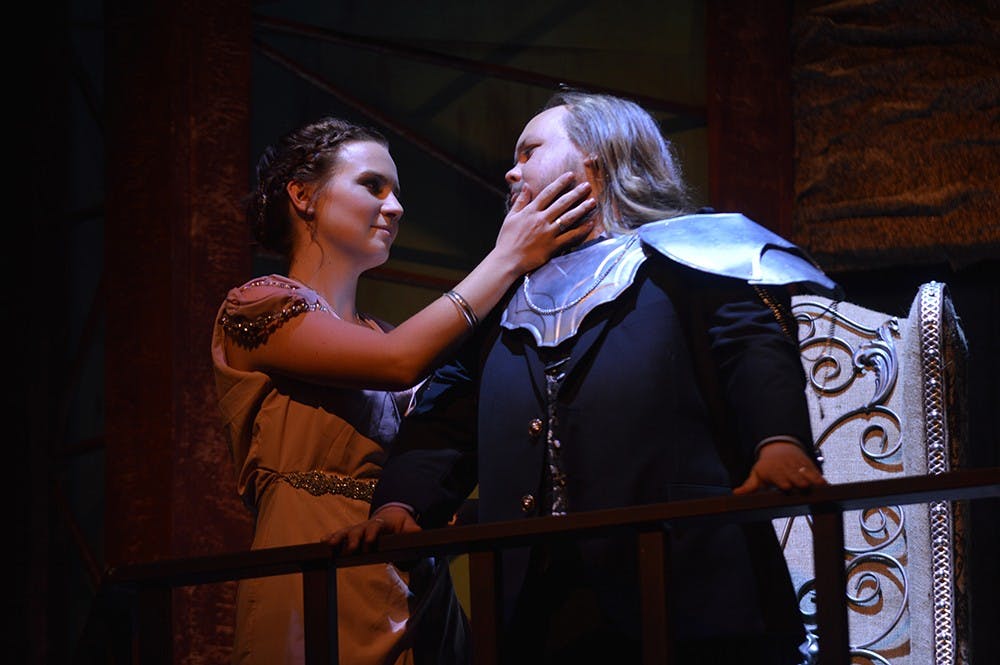“There’s really no style,” Shea said. “We’re creating everything for this production for these people, most of whom aren’t trained dancers in the same way my dancers are trained dancers, but they are doing a fabulous job.”
Shea has taught globally as a master teacher everywhere from Israel to China to Italy. While she has done work for IU drama in the past, it has been primarily with choreography for dance and opera.
“This is really my first foray into this much movement into a straight drama,” she said.
Also preparing for “Antigone” is the 14-member cast that each needs to adapt to the experimental production and its new movement-based style. Ashley Dillard, a second-year graduate student in the theater department working toward an MFA and acting, plays the titular character. Having received a minor in dance as an undergraduate at Indiana State University, she said she understands the language of dance, but her main concern is how to portray her character.
Dillard said she needs to convince herself before going onstage that she is no longer herself but Antigone, and she said she has to carry that through her movement and actions just as much as through her oral performance.
“I don’t feel like me up (onstage),” she said. “I feel like there’s a power from within. It’s that Antigone power coming out.”
Courtney Relyea-Spivack, a junior with a double-major in theater and French, is portraying the role of Ismene, Antigone’s sister, and she also has her own tactic that she uses to delve deep into her character.
Similar to a method actor, Relyea-Spivack said she journals through the perspective of each character she plays — most notably with the role of Kitty Bennett in IU’s 2014 production of “Pride and Prejudice” — chronicling everything that is going on with the character before it appears in the play itself.
She said she considers herself a “loud voice in the Midwest” because she has played strong female characters in the past.
“It was really toning that (strength) down, and that’s not something I know how to do onstage always,” she said. “I knew in every moment of every scene, ‘How can I have the force without the push of it?’”
While Relyea-Spivack said she has danced since she was three years old, her specialization has always been ballet. She said making the transfer from the classically-trained style to the contemporary-trained style was difficult for her.
“It’s like putting your energy and focus in a completely different part of your body,” she said. “If ballet is floating and up, then contemporary is down. But neither is harsh. Everything is fluid and delicate and sort of really wonderful in its own way.”
Relyea-Spivack and Shea said this is a problem that has been faced by many other members of the cast, which is part of the reason why Shea decided to center her original choreography on the abilities of the cast.
She has the actors perform a variety of exercises either solo or with their respective partners for a scene, and she studies the actors’ abilities and bases the choreography on that.
“I think of a dance phrase in our field is like a sentence,” she said. “It has a beginning, a middle and an end. Some words might pop out more than others, but it’s not just about one word we want to focus on.”
Shea said she has full confidence in the success of “Antigone,” and Dillard and Relyea-Spivack said they are also looking forward to their performances.
“With the actors, there’s a common language,” Shea said. “They get it. When they finally understood that all of their acting tools can be translated into the movement expression, that’s when it came alive."
A previous version of this story stated that Elizabeth Shea said she has received countless accolades and acclaim for her work, though she did not state this herself. The IDS regrets this error.






